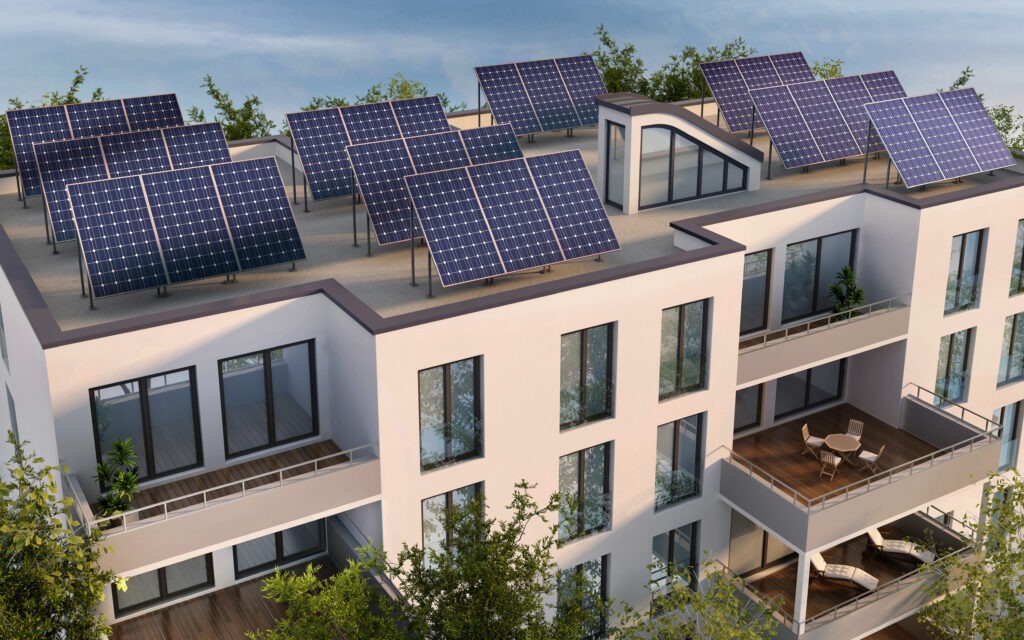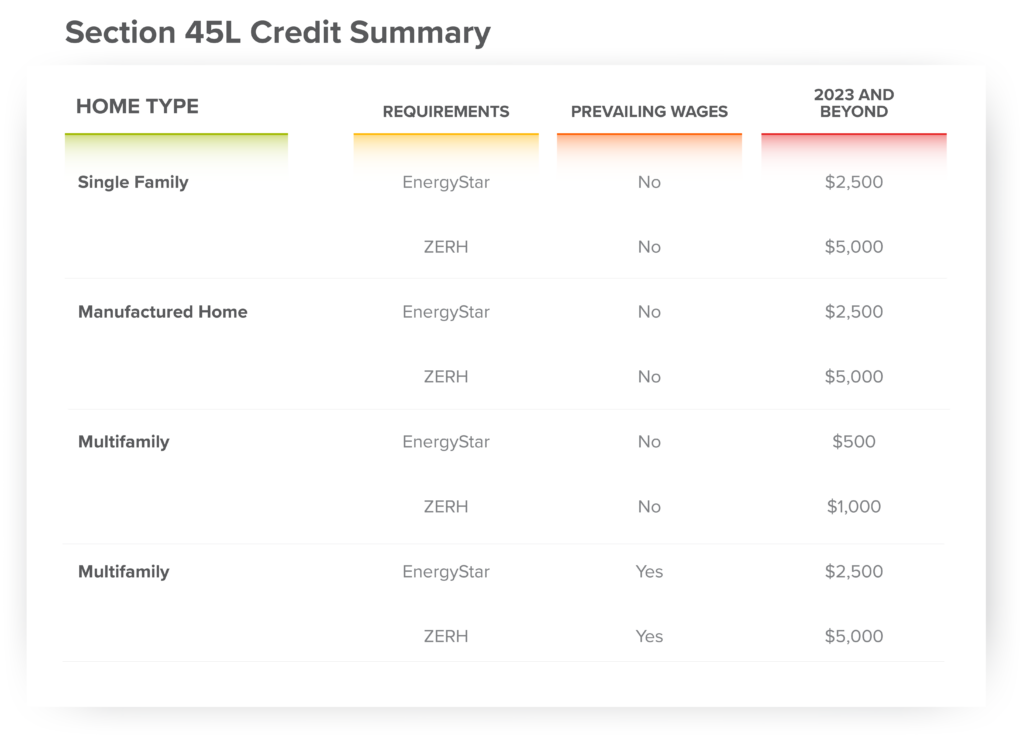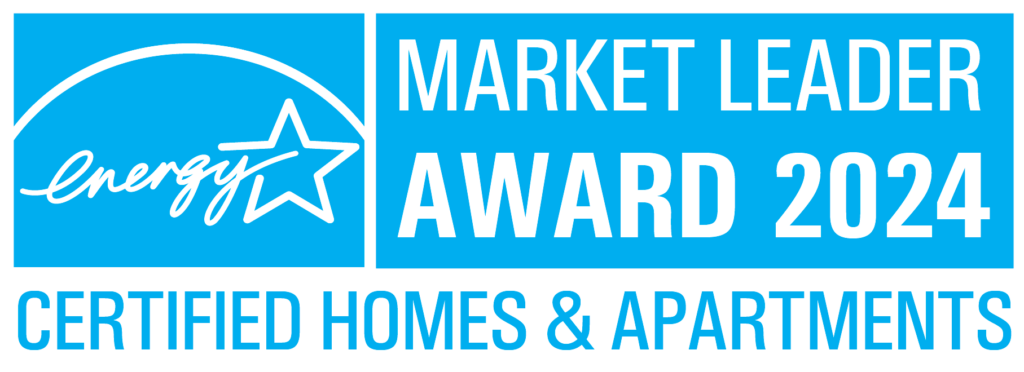Solutions
Section 45L Tax Credit
The Section 45L tax credit offers a compelling financial advantage for those who invest in energy-efficient construction and renovation. Claiming this credit can result in significant savings on your tax bill.
The credit amount is up to $5,000 per eligible dwelling unit for new energy-efficient homes. The credit is available to the property owner or developer who constructed or renovated the property, not to the eventual homebuyer.
Eligible properties can be single-family homes, townhouses, condominiums, or apartment buildings. To qualify for the credit, the dwelling units must meet certain energy efficiency standards, which are usually determined by comparing the energy consumption of the property to that of a reference property built according to the standards set by the International Energy Conservation Code (IECC).
The following energy-efficient buildings leased or sold through qualify for the Section 45L tax credit:


ENERGY STAR, a program by the US Environmental Protection Agency (EPA), acts as a benchmark for energy-efficient products and homes. It is a trusted mark of quality, signifying that a home meets specific energy performance standards established by the EPA.
The 45L tax credit and ENERGY STAR work hand-in-hand. By building homes that meet ENERGY STAR standards, builders can become eligible for the tax credit.
ENERGY STAR certified new homes are energy efficient by design, with savings that start now and continue into the future. Better systems and construction features make all the difference throughout your home. ENERGY STAR certified homes are at least 10 percent more energy efficient than standard new homes built to code—and even more efficient when compared to existing homes.

45L Energy Efficient Home Credit rewards builders and homeowners for constructing or substantially renovating energy-efficient homes.
The tax credit could be in the range of $500 – $5000 per unit for dwelling units placed in service starting from 2023.
Builders and developers who construct or renovate residential properties.
Get in touch with Source Advisors about our 45L tax credit services.
"*" indicates required fields